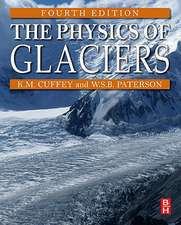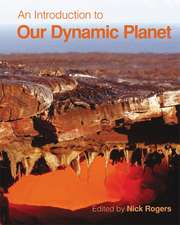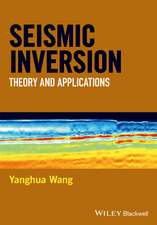Climatic Variations and Forcing Mechanisms of the Last 2000 Years: Nato ASI Subseries I:, cartea 41
Editat de Philip Douglas Jones, Raymond Stephen Bradley, Jean Jouzelen Limba Engleză Paperback – 4 oct 2011
Din seria Nato ASI Subseries I:
- 15%
 Preț: 641.85 lei
Preț: 641.85 lei - 15%
 Preț: 649.87 lei
Preț: 649.87 lei - 15%
 Preț: 659.70 lei
Preț: 659.70 lei - 18%
 Preț: 957.75 lei
Preț: 957.75 lei - 18%
 Preț: 941.05 lei
Preț: 941.05 lei - 18%
 Preț: 959.36 lei
Preț: 959.36 lei - 15%
 Preț: 664.93 lei
Preț: 664.93 lei - 15%
 Preț: 655.27 lei
Preț: 655.27 lei - 15%
 Preț: 644.49 lei
Preț: 644.49 lei - 15%
 Preț: 639.08 lei
Preț: 639.08 lei - 18%
 Preț: 951.29 lei
Preț: 951.29 lei - 18%
 Preț: 952.57 lei
Preț: 952.57 lei - 15%
 Preț: 653.33 lei
Preț: 653.33 lei - 18%
 Preț: 958.56 lei
Preț: 958.56 lei - 15%
 Preț: 641.85 lei
Preț: 641.85 lei - 15%
 Preț: 650.86 lei
Preț: 650.86 lei - 18%
 Preț: 957.94 lei
Preț: 957.94 lei - 15%
 Preț: 649.54 lei
Preț: 649.54 lei - 15%
 Preț: 646.30 lei
Preț: 646.30 lei - 15%
 Preț: 648.89 lei
Preț: 648.89 lei - 15%
 Preț: 640.06 lei
Preț: 640.06 lei - 18%
 Preț: 950.21 lei
Preț: 950.21 lei - 15%
 Preț: 643.65 lei
Preț: 643.65 lei - 15%
 Preț: 649.54 lei
Preț: 649.54 lei - 15%
 Preț: 649.54 lei
Preț: 649.54 lei - 15%
 Preț: 641.71 lei
Preț: 641.71 lei - 15%
 Preț: 642.83 lei
Preț: 642.83 lei - 15%
 Preț: 639.59 lei
Preț: 639.59 lei - 15%
 Preț: 646.62 lei
Preț: 646.62 lei - 18%
 Preț: 962.49 lei
Preț: 962.49 lei - 15%
 Preț: 647.73 lei
Preț: 647.73 lei - 15%
 Preț: 641.71 lei
Preț: 641.71 lei - 18%
 Preț: 1231.47 lei
Preț: 1231.47 lei - 15%
 Preț: 649.22 lei
Preț: 649.22 lei - 15%
 Preț: 641.71 lei
Preț: 641.71 lei - 15%
 Preț: 659.85 lei
Preț: 659.85 lei - 18%
 Preț: 1832.08 lei
Preț: 1832.08 lei - 18%
 Preț: 965.02 lei
Preț: 965.02 lei - 18%
 Preț: 955.25 lei
Preț: 955.25 lei - 18%
 Preț: 956.33 lei
Preț: 956.33 lei - 15%
 Preț: 650.55 lei
Preț: 650.55 lei - 18%
 Preț: 965.97 lei
Preț: 965.97 lei - 15%
 Preț: 652.64 lei
Preț: 652.64 lei - 15%
 Preț: 646.43 lei
Preț: 646.43 lei - 18%
 Preț: 1832.08 lei
Preț: 1832.08 lei - 18%
 Preț: 1225.62 lei
Preț: 1225.62 lei
Preț: 658.70 lei
Preț vechi: 774.94 lei
-15% Nou
Puncte Express: 988
Preț estimativ în valută:
126.04€ • 131.60$ • 104.32£
126.04€ • 131.60$ • 104.32£
Carte tipărită la comandă
Livrare economică 04-18 aprilie
Preluare comenzi: 021 569.72.76
Specificații
ISBN-13: 9783642647000
ISBN-10: 3642647006
Pagini: 668
Ilustrații: X, 653 p.
Dimensiuni: 155 x 235 x 35 mm
Greutate: 0.93 kg
Ediția:Softcover reprint of the original 1st ed. 1996
Editura: Springer Berlin, Heidelberg
Colecția Springer
Seria Nato ASI Subseries I:
Locul publicării:Berlin, Heidelberg, Germany
ISBN-10: 3642647006
Pagini: 668
Ilustrații: X, 653 p.
Dimensiuni: 155 x 235 x 35 mm
Greutate: 0.93 kg
Ediția:Softcover reprint of the original 1st ed. 1996
Editura: Springer Berlin, Heidelberg
Colecția Springer
Seria Nato ASI Subseries I:
Locul publicării:Berlin, Heidelberg, Germany
Public țintă
ResearchCuprins
Section A: Dendroclimatology.- Tree-Ring Variables as Proxy-Climate Indicators: Problems with Low-Frequency Signals.- Tree-Ring Density Networks for Climate Reconstruction.- Millennial and Near-Millennial Scale Dendroclimatic Studies in Northern North America.- Reconciling the Glacial and Dendrochronological Records for the Last Millennium in the Canadian Rockies.- Multimillennial Dendroclimatic Studies from the Western United States.- Large-Scale Climatic Influences on Baldcypress Tree Growth Across the Southeastern United States.- Inter-Decadal Climate Oscillations in the Tasmanian Sector of the Southern Hemisphere: Evidence from Tree Rings over the Past Three Millennia.- Interdecadal Climatic Variations in Millennial Temperature Reconstructions from Southern South America.- Section B: Ice Cores.- Frequency Analysis of an Annually Resolved, 700 Year Paleoclimate Record from the GISP2 Ice Core.- Climate Reconstruction from Water Isotopes: What do we Learn from Isotopic Models?.- Climate Changes in the Atlantic Sector of Antarctica Over the Past 500 Years from Ice-Core and Other Evidence.- Holocene Climate Changes Recorded in an East Antarctica Ice Core.- Climatic Changes for the Last 2000 Years Inferred from Ice Core evidence in Tropical Ice Cores.- Inter-Comparison of Ice Core ?18O and Precipitation Records from Sites in Canada and Greenland over the Last 3500 Years and over the Last Few Centuries in Detail Using EOF Techniques.- Section C: Corals.- Coral Records of Climate Change: Understanding Past Variability in the Tropical Ocean-Atmosphere.- The Potential of Massive Corals for the Study of High-Resolution Climate Variation in the Past Millennium.- Eastern Pacific Corals Monitor El Niño/Southern Oscillation, Precipitation, and Sea Surface Temperature VariabilityOver the Past 3 Centuries.- Section D: Historical Evidence.- Reconstructions of Past Climate from Historical Sources in the Czech Lands.- The Analysis of Two Bi-Millennial Series: Tiber and Po River Floods.- Section E: Varved Sediments.- High Resolution Lacustrine Sediments and their Potential for Paleoclimatic Reconstruction.- Varved Sediment Records of Recent Seasonal to Millennial-Scale Environmental Variability.- Section F: Forcing Factors.- Intercomparisons of Proxies for Past Solar Variability.- Reconstructions of Past Solar Variability.- The Volcanic Record in Ice Cores for the Past 2000 Years.- Changes in Trace Gas Concentrations During the Last 2000 Years and More Generally, the Holocene.- The Potential for Modeling the Effects of Different Forcing Factors on Climate During the Past 2000 Years.- Section G: Conclusions.- Temperature Changes on Long Time and Large Spatial Scales: Inferences from Instrumental and Proxy Records.- Are There Optimum Sites for Global Paleotemperature Reconstruction?.- What Can the Instrumental Record Tell us About Longer Timescale Paleoclimatic Reconstructions?.- Conclusions and Recommendations.













